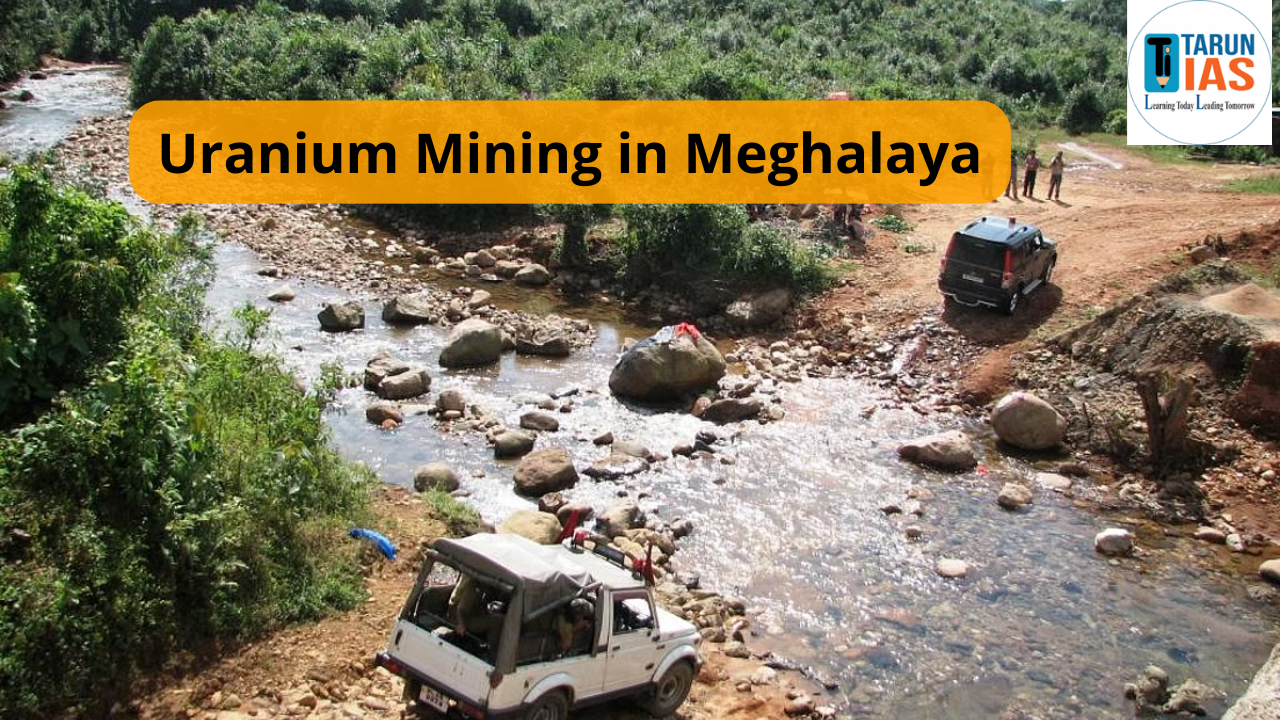Dams in India 2025 are a cornerstone of the nation’s water management, agriculture, electricity generation, and flood control strategies. With India being predominantly an agrarian economy, dams play a vital role in ensuring a consistent water supply and supporting rural and urban development alike. As of 2025, India has over 5,000 large dams, with more under construction, each contributing uniquely to the nation’s development.
In this article, we cover the List of Major Dams in India 2025, their types, importance, first dam, and the highest and longest dams with a state-wise list for UPSC and other competitive exam aspirants.
Dams in India 2025 Overview
As of 2025, India has over 5,700 large dams playing a crucial role in irrigation, hydroelectric power generation, flood control, and water supply. Key dams in India like Tehri (Uttarakhand), Bhakra (Himachal Pradesh), and Hirakud (Odisha) are vital for managing the country’s water resources. Maharashtra has the highest number of dams, while the Tehri Dam is the tallest and Hirakud is the longest. With increasing water demands and climate challenges, India continues to invest in dam modernization, safety (through projects like DRIP), and smart water management systems to ensure sustainable development and water security.
Also Read: Major Rivers in India
What is a Dam?
A dam is a man-made barrier constructed across a river, stream, or other water bodies to hold back and manage the flow of water. The main purpose of a dam is to store water in a reservoir or artificial lake formed behind it. This stored water can then be used for a variety of vital purposes, including irrigation, drinking water supply, hydroelectric power generation, flood control, navigation, and recreation.
Types of Dams in India
Dams in India are classified based on their structural design and construction materials. Each type serves specific purposes and is built according to the geographical and hydrological conditions of the area. Below are the main types of dams found in India, along with their descriptions and notable examples:
Arch Dam
An arch dam is a curved structure built across narrow canyons or gorges. The curved design allows the water pressure to be transferred to the canyon walls, reducing stress on the dam itself. These dams are typically made of concrete and are suitable for locations with strong, rocky abutments.
- Example: Idukki Dam, Kerala – One of India’s largest arch dams, built across the Periyar River
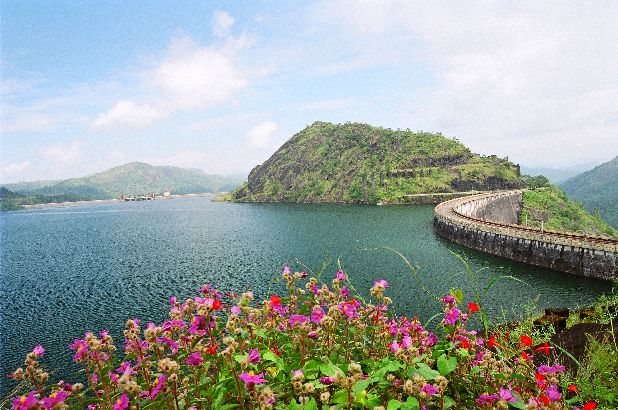
Gravity Dam
A gravity dam relies entirely on its weight to resist the pressure of water. It is usually made of concrete or stone masonry and is constructed on a solid foundation. Gravity dams are stable and strong and can be used for water storage and power generation.
- Example: Bhakra Dam, Himachal Pradesh – One of the highest gravity dams in the world, built on the Sutlej River.
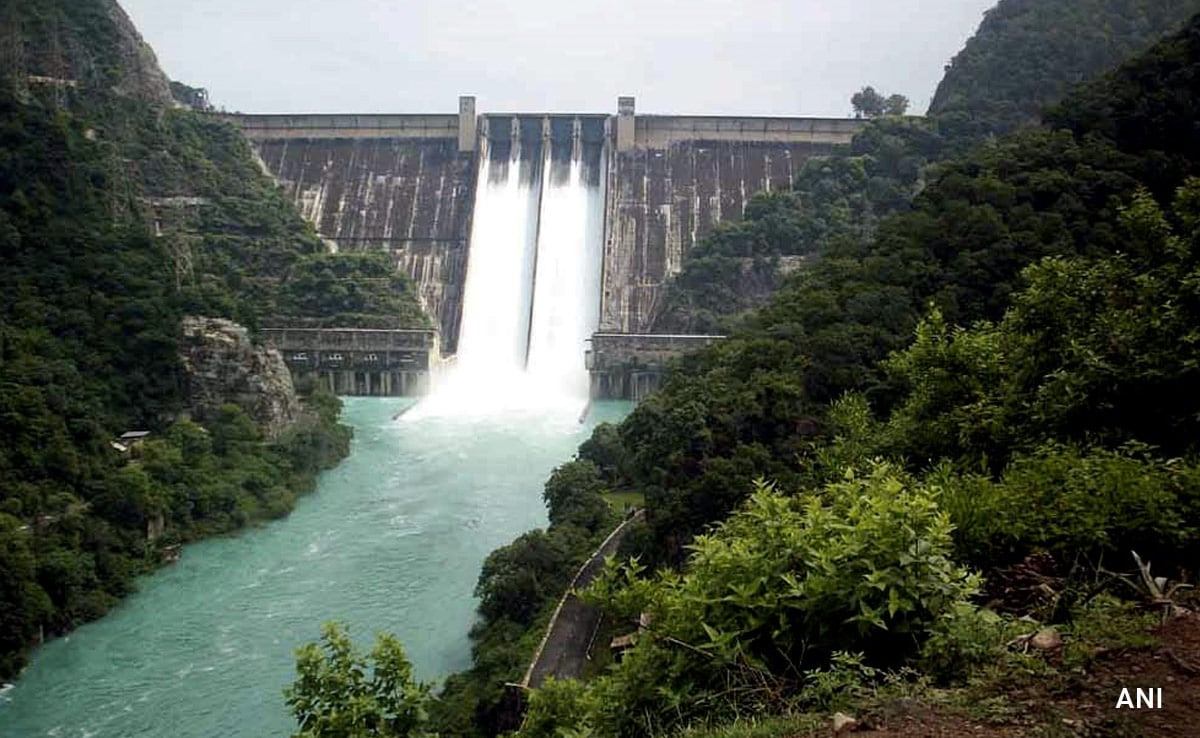
Also Read: Ramsar sites in India
Arch-Gravity Dam
An arch-gravity dam combines features of both arch and gravity dams. It has a slight curve (like an arch dam) but also depends on its weight (like a gravity dam) to resist water pressure. This design is used where partial natural support from valley walls is available.
- Example: Tehri Dam, Uttarakhand – India’s tallest dam, constructed on the Bhagirathi River.
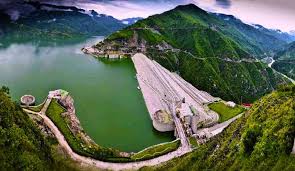
Embankment Dam
An embankment dam is made from natural materials like earth, rock, or a combination of both. These dams are designed with an impermeable core that prevents seepage and are built where wide valleys exist. They are more flexible than concrete dams and can withstand minor earth movements.
- Example: Hirakud Dam, Odisha – The longest earthen dam in the world, built on the Mahanadi River.

Also Read: Tiger Reserves In India
Rock-Fill Dam
A rock-fill dam is constructed with compacted rocks and features an impermeable membrane or core to prevent water leakage. These dams are sturdy and suited for areas where rock is readily available.
- Example: Sardar Sarovar Dam, Gujarat – A multipurpose rock-fill dam on the Narmada River.
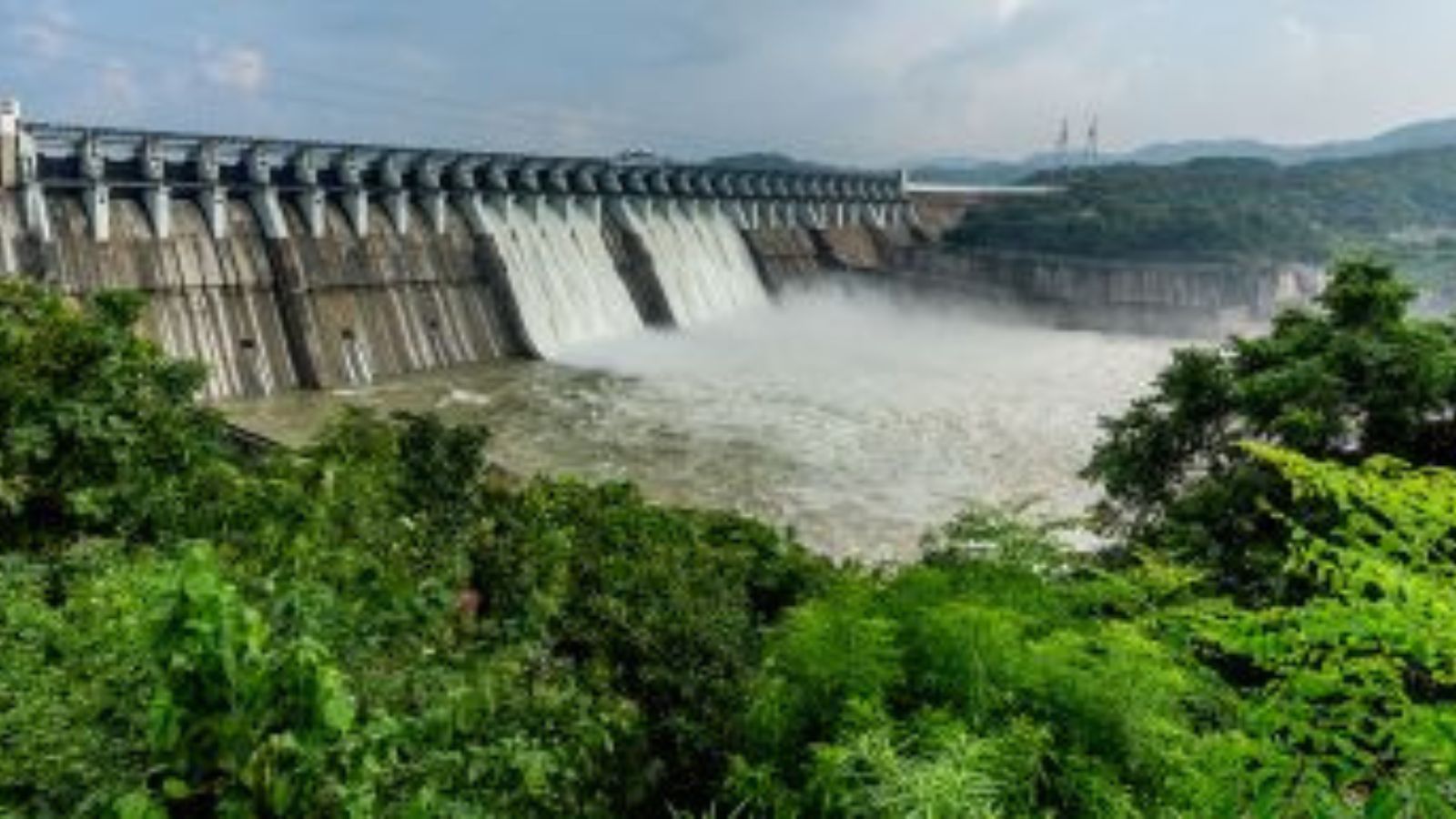
Earth-Fill Dam
An earth-fill dam, also called an earthen dam, is made of well-compacted earth and clay materials. These are cost-effective and often used for small to medium projects. The dam includes drainage systems to manage seepage.
- Example: Mettur Dam, Tamil Nadu – Built across the Cauvery River, it is essential for irrigation and power.
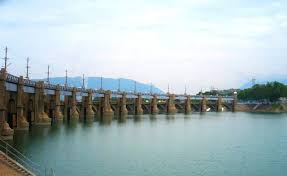
Barrage
A barrage is a low-head, gate-controlled diversion dam constructed across a river. It doesn’t store water like traditional dams but controls water flow and maintains upstream water levels for irrigation and navigation.
- Example: Farakka Barrage, West Bengal – Built on the Ganga River to divert water to the Hooghly River.
List of Major Dams in India 2025
India, with its vast network of rivers and diverse geography, has constructed several large dams to meet its needs for irrigation, hydroelectric power, drinking water, and flood control. These dams are vital for supporting agriculture, powering industries, and ensuring water security across states. Below is a detailed description of the top 10 major dams in India in 2025, each representing engineering excellence and regional significance.
Tehri Dam – Uttarakhand
- River: Bhagirathi
- Importance: The Tehri Dam is the tallest dam in India, standing at 260.5 meters. It is an arch-gravity dam and plays a crucial role in hydroelectric power generation, irrigation, and drinking water supply for major cities including Delhi. It also supports flood control and sustainable river management.
Bhakra Dam – Himachal Pradesh
- River: Sutlej
- Importance: The Bhakra Dam is one of the highest gravity dams in the world. It is a cornerstone of India’s Green Revolution, supplying irrigation water to Punjab, Haryana, and Rajasthan, and generating substantial hydroelectric power.
Sardar Sarovar Dam – Gujarat
- River: Narmada
- Importance: This dam is a major multipurpose project in western India. It provides drinking water, irrigation, and electricity to Gujarat, Maharashtra, Madhya Pradesh, and Rajasthan. It also supports drought relief and water conservation.
Hirakud Dam – Odisha
- River: Mahanadi
- Importance: The Hirakud Dam is the longest earthen dam in the world, stretching over 25.8 kilometers. It plays a key role in flood control, irrigation, and hydroelectric generation, benefiting Odisha and neighboring states.
Idukki Dam – Kerala
- River: Periyar
- Importance: The Idukki Dam is a double curvature arch dam and a critical part of Kerala’s power infrastructure. It forms part of a major hydroelectric project, supplying clean energy while supporting water storage for various needs.
Mettur Dam – Tamil Nadu
- River: Cauvery
- Importance: The Mettur Dam is one of the oldest and most important irrigation dams in southern India. It ensures water supply to the Cauvery delta and supports both agriculture and hydroelectric generation in Tamil Nadu.
Nagarjuna Sagar Dam – Andhra Pradesh
- River: Krishna
- Importance: Among the largest masonry dams in the world, the Nagarjuna Sagar Dam is a multipurpose structure providing irrigation, hydroelectric power, and drinking water across Andhra Pradesh and Telangana.
Rihand Dam – Uttar Pradesh
- River: Rihand
- Importance: The Rihand Dam is the largest dam in Uttar Pradesh, known for supporting large-scale hydroelectric power production and irrigation. It also helps in controlling seasonal flooding.
Koyna Dam – Maharashtra
- River: Koyna
- Importance: The Koyna Dam is a major hydroelectric dam that powers much of western Maharashtra. It is key to the Koyna Hydroelectric Project, one of the largest in India, and contributes to water storage and flood control.
Indira Sagar Dam – Madhya Pradesh
- River: Narmada
- Importance: The Indira Sagar Dam features one of the largest reservoirs in India. It is essential for irrigation, drinking water supply, and power generation in central India, significantly impacting agriculture and energy sectors.
State-wise List of Major Dams in India
India’s extensive dam network is distributed across its states, supporting regional water needs, agriculture, power generation, flood control, and drinking water supply. Here’s a comprehensive state-wise description of major dams in India.
| State | Major Dams |
| Andhra Pradesh | Nagarjuna Sagar Dam, Srisailam Dam, Pulichintala Dam, Somasila Dam, Prakasam Barrage |
| Arunachal Pradesh | Subansiri Lower Dam, Dibang Dam, Ranganadi Dam, Kameng Dam |
| Assam | Karbi Langpi Dam, Kopili Dam, Subansiri Dam |
| Bihar | Koshi Barrage, Farakka Barrage, Supaul Barrage, Bagmati Barrage |
| Chhattisgarh | Indravati Dam, Hasdeo Bango Dam, Dudhawa Dam, Murrum Silli Dam |
| Gujarat | Sardar Sarovar Dam, Ukai Dam, Dantiwada Dam, Kadana Dam, Dharoi Dam |
| Himachal Pradesh | Bhakra Dam, Pandoh Dam, Chamera Dam, Nathpa Jhakri Dam, Pong Dam |
| Jammu and Kashmir | Baglihar Dam, Salal Dam, Uri-II Dam, Dulhasti Dam |
| Karnataka | Almatti Dam, Tungabhadra Dam, Krishnarajasagar Dam, Linganamakki Dam, Supa Dam |
| Kerala | Idukki Dam, Mullaperiyar Dam, Malampuzha Dam, Periyar Dam |
| Madhya Pradesh | Bargi Dam, Indira Sagar Dam, Omkareshwar Dam, Tawa Dam, Gandhi Sagar Dam |
| Maharashtra | Koyna Dam, Jayakwadi Dam, Bhandardara Dam, Wilson Dam, Vaitarna Dam |
| Odisha | Hirakud Dam, Rengali Dam, Upper Kolab Dam, Mandira Dam, Balimela Dam |
| Punjab | Bhakra Dam, Ranjit Sagar Dam, Harike Barrage, Hussainiwala Barrage |
| Rajasthan | Rana Pratap Sagar Dam, Jawai Dam, Mahi Dam, Bisalpur Dam |
| Tamil Nadu | Mettur Dam, Mullaperiyar Dam, Vaigai Dam, Parambikulam Aliyar Project (PAP) Dam |
| Telangana | Nagarjuna Sagar Dam, Srisailam Dam, Sriram Sagar Dam, Singur Dam, Lower Manair Dam |
| Uttar Pradesh | Tehri Dam, Rihand Dam, Matatila Dam, Kanpur Barrage, Obra Dam |
| Uttarakhand | Tehri Dam, Ramganga Dam, Dharasu Dam, Maneri Dam |
| West Bengal | Farakka Barrage, Maithon Dam, Panchet Dam, Tilaiya Dam, Konar Dam |
First Dam in India – Kallanai Dam (Grand Anicut)
The Kallanai Dam, also known as the Grand Anicut, is recognized as the first dam in India and one of the oldest water-diversion structures in the world that is still in use today. Built in the 2nd century CE by Chola king Karikalan, it represents the advanced engineering capabilities of ancient India.
- Location: Trichy District, Tamil Nadu
- River: Kaveri (Cauvery) River
- Material: Constructed using unhewn stone
- Significance:
- Built for irrigation purposes in the Cauvery delta region
- Continues to function, diverting river water to fertile agricultural lands
- Serves as a benchmark in ancient civil engineering and hydraulic systems
Largest Dam in India is Sardar Sarovar Dam
The Sardar Sarovar Dam is the largest dam in India in terms of volume and storage capacity. It is a major component of the Narmada Valley Development Project and is vital to the western and central regions of India.
- State: Gujarat
- River: Narmada
- Type: Concrete gravity dam
- Height: 163 meters
- Significance:
- Supplies drinking water, irrigation, and hydroelectric power to Gujarat, Maharashtra, Madhya Pradesh, and Rajasthan
- Aids in water redistribution to drought-prone areas
- Its reservoir supports millions of people with water and power
Highest Dam in India is Tehri Dam
The Tehri Dam is the tallest dam in India, with a height of 260.5 meters. It is an arch-gravity dam and one of the largest hydroelectric projects in the country.
- State: Uttarakhand
- River: Bhagirathi
- Type: Arch-gravity dam
- Significance:
- Generates over 1,000 MW of electricity
- Provides drinking water to major cities like Delhi and parts of Uttar Pradesh
- Helps in flood control and maintaining river flow regulation
- A key example of large-scale infrastructure in a geologically sensitive region
Conclusion
Dams in India are a key infrastructure backbone for the country’s sustainable growth and water security. From supporting millions of farmers through irrigation to powering cities with renewable energy, the role of dams is multifaceted and crucial. With technological advancements and environmental considerations, modern dams are evolving to meet future challenges effectively.
Dams in India FAQs
How many large dams are there in India in 2025?
As of 2025, there are over 5,700 large dams in India, making it one of the top countries globally in dam infrastructure. These dams play a vital role in water supply, irrigation, and power generation.
Which is the highest dam in India?
The Tehri Dam in Uttarakhand is the highest dam in India, with a height of 260.5 meters. It is an arch-gravity dam built on the Bhagirathi River.
What is the importance of dams in India?
Dams in India are crucial for irrigation, hydroelectric power, flood control, drinking water supply, and regional development. They support agriculture and ensure water security for millions.
Which is the longest dam in India and where is it located?
The Hirakud Dam in Odisha is the longest dam in India, stretching 25.8 kilometers across the Mahanadi River. It is a major earthen dam used for irrigation, power, and flood control.
Which state has the most number of dams in India?
Maharashtra has the highest number of large dams in India, contributing significantly to the state’s irrigation and water resource management.











